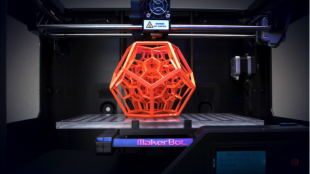Protecting Patents from the Looming 3D Printing Storm
The current state of U.S. patent infringement law does not meet the challenges of 3D printing technology. 3D printing is a process in which a printer produces a physical three-dimensional object from a “CAD” file, which is an image file formatted for computers. Owners of the printer merely have to upload the CAD file onto the printer to reproduce the desired object. Although 3D printing has yet to gain broad use and appeal, the law may need to catch up with the technological advancement. Data indicate that 3D printing could be mainstream in even five years. The federal statute controlling the area of patent infringement (including 3D printing) is 35 U.S.C. § 271. The statute explains both direct and indirect patent infringement. Direct infringement is the act of making, using, selling, offering, or importing into the U.S., any patented invention, without permission. Indirect infringement, is any act that is not direct infringement, but which requires some knowledge and intent regarding the actual infringement. The federal statute protects against infringement in the most basic sense. In Bauer & Cie. v. O’Donnell, the Supreme Court ruled that physically reproducing a patented invention is the same as “making” a patented invention (direct infringement). [read more]


